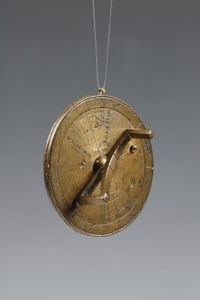"Time and Cosmos in Greco-Roman Antiquity" Reviewed in New York Times
In the Science section of today's New York Times, John Noble Wilford reviewed the recently opened Time and Cosmos in Greco-Roman Antiquity. Wilford notes the exhibition theme's implications for our daily lives, how, according to curator Professor Alexander Jones, our culture "has allowed technology and science to impose a rigid framework of time on our lives.”
Wilford highlights the portable sundials exhibited, encouraging viewers to "think of pocket watches coming in as movable timekeepers in place of the grandfather clock in the hall or on the mantel. They were first mentioned in ancient literature as the pendant for traveling. The earliest surviving one is from the first century A.D." Six of these portable sundials are on view in the exhibition.
In the article, Wilford also discusses astrology as a "popular outgrowth of advances in ancient timekeeping... Because the heavens and the earth were thought to be connected in so many ways, the destinies of nations as well as individuals presumably could be read by someone with expertise in the arrangements of the sun, the moon, the known planets and constellations in the zodiac."
Be sure to visit Time and Cosmos in Greco-Roman Antiquity, open Wednesday - Sunday, 11am - 6pm. Free guided tours on Fridays with extended hours until 8pm.
Portable Universal Sundial
Bronze, H. 6.4 cm; W. 6.1 cm; D. 2.5 cm
Near Bratislava (?), ca. 250 CE
Museum of the History of Science, Oxford: 51358
